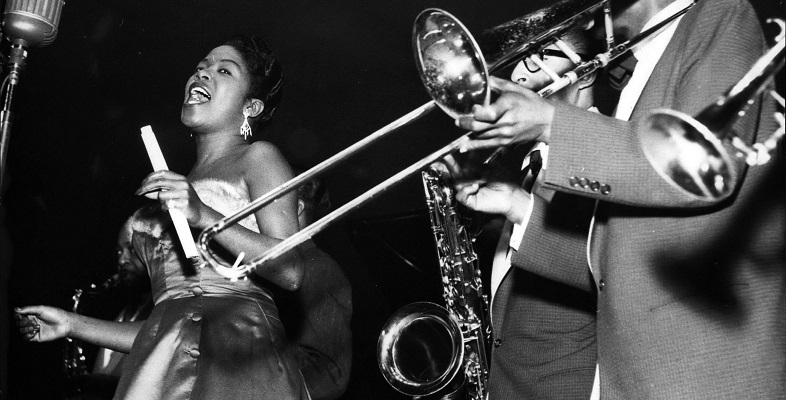6 Alphabetical designations
The preceding sections have introduced a range of specialist terms for describing form in Western popular song (e.g., verse and chorus), Congolese rumba (seben), North American Indigenous powwow song (e.g., push-up, lead), and Hindustani classical vocal music (e.g., ālāp, bandiś).
In the remaining sections, you will look at another way of describing form in music, this time involving alphabetic designations. These designations allow musicians to identify simple forms quickly and clearly. They can also be used to describe complicated structures with precision.
Beginning with the most common designations, jazz and classical musicians regularly use labels such as AABA or ABA to communicate information about musical structures. The letters allow them to identify patterns of repetition and contrast. Reusing a letter indicates that a section of music is repeated; adding a new letter indicates that a contrasting section of music is introduced. For example, the designation AABA tells us that a section of music is presented twice (AA), that something new is then presented (B), and that the first section of music is then presented again (A).
AABA form has been used widely in popular songs from the West since the nineteenth century. During the early twentieth century, AABA form was closely associated with songs from US and UK musicals: stage dramas featuring music in a popular style. Many songs from musicals ended up making their way into jazz. Jazz is a musical genre rooted in African American expressive traditions including blues and gospel, and it makes extensive use of improvisation and cyclical forms (Tucker and Jackson, 2020), which will be discussed further below.
‘Just One of Those Things’ is a song in AABA form originally written by US songwriter Cole Porter for the 1935 musical Jubilee. It became a widely performed jazz standard. Audio 6 [Tip: hold Ctrl and click a link to open it in a new tab. (Hide tip)] is a performance of the song by jazz singer Sarah Vaughan, accompanied by pianist Jimmy Jones, bassist Richard Davis, and drummer Roy Haynes. It was recorded live in a nightclub in Chicago in 1957.
Activity 7 Listening to ‘Just One of Those Things’
Part 1
Listen two or three times to the opening of Vaughan’s performance of ‘Just One of Those Things’ in Audio 6, from 00:00 to around 01:45. Follow along with the form with the help of Table 8 below.
As you listen, keep two points in mind. Firstly, the designation AABA refers to repetition and contrast in the musical elements, rather than in the lyrics. Notice that although the first A begins ‘It was just one of those things’ and the second begins ‘It was just one of those nights’, the final A section strays from this pattern, beginning with the word ‘Goodbye’. All the same, composers of popular songs often find ways to connect the various A sections to one another in terms of the text. In Porter’s song, each of the A sections ends with the words ‘It was just one of those things.’
Secondly, there are often differences between the A sections in AABA form. Put another way, the musical repetitions are varied. This variation frequently supports changes in the text from section to section, but it also occurs for musical reasons. The key thing is that the A sections sound much more like one another than they sound like the B section, or like something altogether new.
| Section | Track time | Lyrics |
| Introduction | 00:02 | |
| A | 00:14 | It was just one of those things ... |
| A | 00:37 | It was just one of those nights ... |
| B | 00:58 | If we’d thought a bit ... |
| A | 01:20 | So goodbye, goodbye ... |
Part 2
Now that you are familiar with the AABA form, try to work out how it structures the rest of the performance. At 01:40, Vaughan starts to move through the form again. Listen a few times to the recording starting at that point and try to identify where the four parts of the AABA form reappear. Add the relevant track times to the appropriate text boxes in Table 9 (the first one has already been completed for you). When you’ve done this, answer the question underneath.
| Section | Track time 1 | Lyrics |
| A | 01:40 | It was just one of those things ... |
| A | It was just one of those nights ... | |
| B | If we’d thought a bit ... | |
| A | So goodbye, goodbye ... |
Do any of these sections sound different from how they sounded earlier? Make two or three observations in the text box below.
Discussion
Here is Table 9 with the missing track times added.
| Section | Track time | Lyrics |
| A | 01:40 | It was just one of those things ... |
| A | 02:02 | It was just one of those nights ... |
| B | 02:22 | If we’d thought a bit ... |
| A | 02:42 | So goodbye, goodbye ... |
You should have noticed that all of the sections sound a little different than the first time through the AABA form. You may also have realised that Vaughan introduces improvised variations as she moves through the song form a second time. The most substantial differences occur in the final A section, which the entire ensemble stretches out to help create the sense of an ending.
